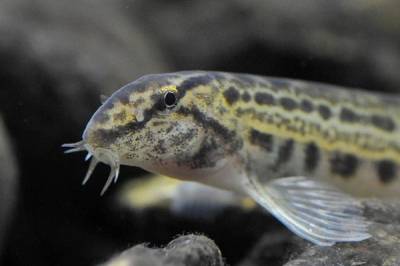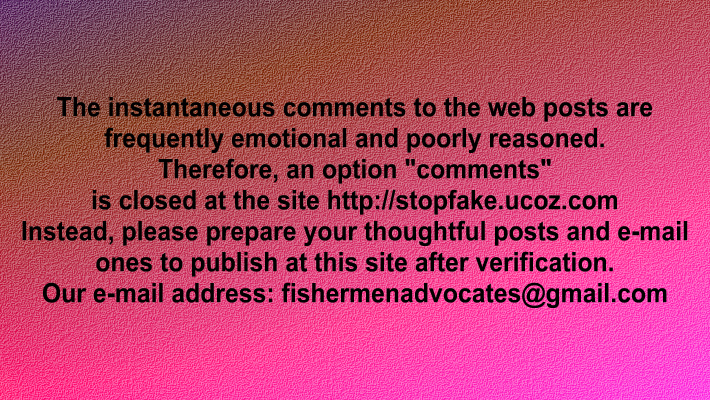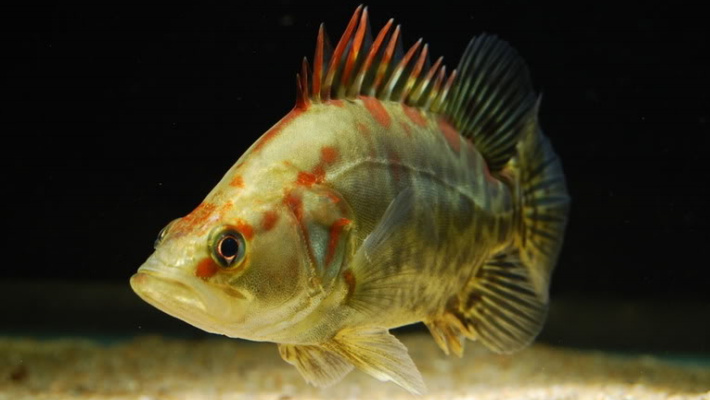|
Earthworms,
Eisenia foetida, are widely used as
an accessible bait for many fish. Fishing practice shows, however, that
these worms are not as attractive to fish as it is commonly believed.
The
scientific term foetida references
the well known fact that these worms use the yelowish stinky secretion
for self-defense. If the worms are handled roughly, they emit an unpleasure
odor designed to drive away predators. This stinky secretion can also be used
to distinguish E. foetida from some close relative worms that
look in the similar ways.
In
addition, there are problems with the palatability and nutritive value of these
worms as food for fish in aquaculture in
comparison with other
earthworm species (Stafford & Tacon, 1985; Reinecke et al.,
1991; Ortega et al., 1996; Kostecka & Pączka, 2006). The aim of
the foregoing research was to find the strong arguments advocating an idea to
use these worms as an available protein source to fish.
Fishing Practice
In the field
experiments, we compared the attractivities of an odor of squashed live earthworms,
E. foetida, that may be unfamiliar food to fish, and an odor
of natural food. Spined loach, Cobitis taenia, were selected as an model fish due to their abundance
in the research area, small size (usable for minnow traps) and the night type
of feeding activity (Robotman, 1977; Marszał et al., 2003). Squashed live
bloodworms, Chironomus plumosus, were
used in the capacity of food that is closer to the natural diets of spined
loach in the different habitats than terrestrial earthworms.

Spined loach, Cobitis taenia (powered by Lubomir Hlasek)
Experiments were carried out in the upper part of Kaniv’s reservoir, below
Kyiv, in the summer season.
Fish were caught in the narrow ducts of
20-40 cm depth with the slightly muddy sandy bottom and few macrophytes like pondweeds. Because spined
loach were small (4-6 cm), that is mean length for this species, simple minnow
traps made of 6 liters transparent plastic bottles were used. When setting at the
bottom, the necks of the traps were located at the distance of 20 cm from each other and submerged by half into the sand. After final trap setting, feeders with 3gr of squashed
earthworms and, correspondingly, 3gr of squashed bloodworms were fell through
the top holes in the pair traps. Traps were set in evening (about 10:00 pm, in June) and checked at dawn to avoid catching fish with the day type of feeding activity.
The
number of fish caught in the pair traps with the compared odors are shown for
clarity in the Table 1. According to Wilcoxon sign-rank test (n = 10, Tfact
< T standard, P < 0,01), spined loach ignored an odor of
earthworms, E. foetida, at the high level of reliability.
In the daytime,
the same minnow traps allow to catch juvenile roach, Rutilus rutilus, and other cyprinid fish chiefly with the day type
of feeding activity. In all these tests, naïve fish preferred an odor of
bloodworms, C. plumosus, over an
unknown and unusual odor of earthworms, E. foetida.
For
comparison (Fiore et al., 2004), predatory flatworms, Bipalium adventitium, are less successful at preying on E. foetida than on Lumbricus rubellus and L.
terrestris with some aversion to the secretions of E. fetida.
So, use of
the foregoing worms as an accessible fishing bait needs prebaiting. Apparently,
in those fishing localities where anglers use these worms regularly fish are
familiar with this bait.
Basic References
Fiore C., Tull J.L., Zehner S., Ducey P.K.
2004. Tracking and
predation on earthworms by the invasive terrestrial planarian Bipalium adventitium (Tricladida,
Platyhelminthes). Behavioural
Processes 67, 327-334
Kostecka J.,
Pączka G. 2006. Possible use of earthworm Eisenia fetida (Sav.) biomass for breeding aquarium fish. European Journal of Soil Biology 42, S231-S233
Marszał L.,
Grzybkowska M., Przybylski M., Valladold M. 2003. Feeding
activity of spined loach Cobitis Sp. in Lake Lucień,
Poland. Folia biologica (Kraków) 51, S159-S165
Ortega
C.M.F., Reyes O.A.L., Mendoza
M.G. 1996. Chemical composition of earthworm (Eisenia fetida and Lumbricus rubellus) silages. Archivos Latinoamericanos de
Nutrición 46, 325-328
Reinecke
A.J., Hayes J.P., Cilliers S.C. 1991. Protein quality of three different species of earthrvorms. South African Journal of Animal Science
21, 99-103
Robotman
P.W.J. 1977. Feeding
habits and diet in two populations of spined loach, Cobitis taenia (L.). Freshwater
Biology 7, 469-477
Stafford E.A., Tacon A.G.J. 1985. The nutritional
evaluation of dried earthworm meal (Eisenia
foetida, Savigny, 1826) included at low levels in production diets for
rainbow trout, Salmo gairdneri Richardson.
Aquaculture Research 16, 213-222
|








 SUBSCRIBE
SUBSCRIBE



